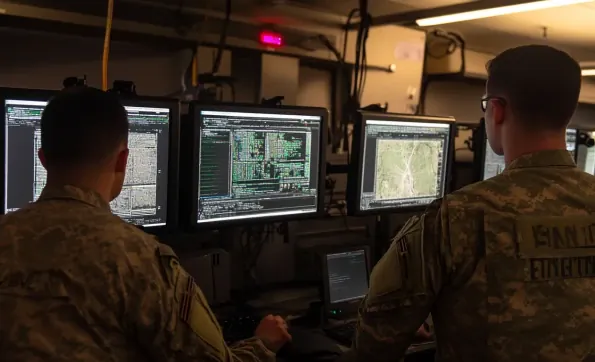The evolving landscape of warfare and increasingly contested information environments have necessitated a transformative approach to the Army’s cybersecurity and connectivity strategies. Released as a successor to the 2021 initiative, the Army Unified Network Plan (AUNP) 2.0 aims to significantly enhance the security and efficiency of the Army’s data transmission processes. The main objective of AUNP 2.0 is to integrate zero-trust cybersecurity measures while ensuring robust connectivity for warfighters. It sets a concrete roadmap for achieving a unified Army network by 2027 and advancing towards a multi-domain operational Army by 2030. This vision encapsulates the Army’s intent to remain at the forefront of modern warfare technologies and capabilities.
Embracing Zero-Trust Cybersecurity Principles
Central to the AUNP 2.0 is the adoption of zero-trust cybersecurity principles, an advanced framework designed to continuously validate and monitor users and devices with the premise that adversaries might already be within the network. This significant shift underscores a broader Department of Defense (DOD) objective to implement target levels of zero trust across all components by the end of the fiscal year 2027. The zero-trust model mandates that access to network resources be granted based on stringent verification, authentication, and authorization protocols.
This enhanced cybersecurity posture addresses the need for adaptable and agile data systems capable of withstanding denied, disrupted, intermittent, and limited bandwidth (DDIL) conditions. Moving away from conventional static command posts and perimeter defenses, the zero-trust approach enables a dynamic and resilient defense-in-depth strategy. Additionally, it emphasizes the necessity for centralized network management, common standards, and secure data-sharing across security domains and with international allies. This approach ensures that the Army’s network infrastructure remains robust and resilient in the face of evolving threats.
Advancements and Goals Beyond 2027
Post-2027, the Army is set to shift towards even more sophisticated modernization and integration of zero-trust architecture with other services and mission partners. The roadmap outlines implementing next-generation technologies, including dynamic transport solutions, powerful computing capabilities, advanced sensors, and quantum-resistant encryption to ensure data integrity against advanced cyber threats. Moreover, leveraging artificial intelligence, machine learning, and automated systems is expected to optimize threat detection and response times significantly.
This progressive vision serves as a bedrock for the Army’s future operational capabilities, ensuring that it remains agile and responsive to both conventional and asymmetric threats. Emerging technologies are poised to play a critical role in this transformation, providing enhanced situational awareness and decision-making capabilities. As the Army continues to refine its network infrastructure, these innovations will be pivotal in maintaining a competitive edge and safeguarding national security.
Immediate Steps and Implementation
One of the immediate focus areas of the AUNP 2.0 is operationalizing the unified network, which involves finalizing the Army’s segment of the Department of Defense Information Network. This initiative aims to streamline data flow and communications, enhancing interoperability among different branches of the military. Additionally, implementing hybrid compute capabilities and establishing a persistent Mission Partner Environment are critical components for ensuring seamless operations even in contested spaces.
The plan emphasizes the reduction of IT complexity at the tactical edge and centralized IT service delivery. Establishing common standards and systems is crucial to ensure compatibility and seamless integration across various platforms and environments. Enhanced secure data-sharing across different security domains and with allied forces is also a key priority, fostering collaboration and information exchange for mission success. Echelon-specific operational requirements ensure that solutions are tailored to address the unique challenges faced at different levels of command.
Conclusion: Roadmap to a Unified Network
The rapidly changing landscape of warfare and increasingly contested information environments have necessitated a significant transformation in the Army’s approach to cybersecurity and connectivity. The Army Unified Network Plan (AUNP) 2.0, succeeding the 2021 initiative, aims to considerably enhance the security and efficiency of the Army’s data transmission processes. The primary goal of AUNP 2.0 is to incorporate zero-trust cybersecurity measures while ensuring robust connectivity for its warfighters. It outlines a clear roadmap to achieve a unified Army network by 2027 and moves toward establishing a multi-domain operational Army by 2030. This strategic vision signifies the Army’s determination to stay at the cutting edge of modern warfare technologies and capabilities. By embracing innovative cybersecurity defenses and enhancing network cohesion, the plan is designed to meet the multifaceted challenges of contemporary and future combat environments, ensuring that the Army maintains a decisive edge in various operational theaters.













